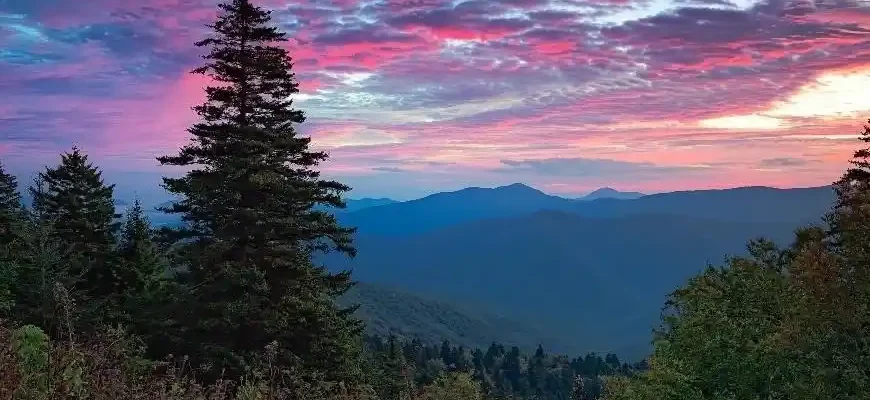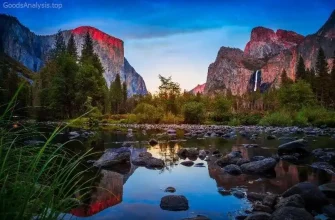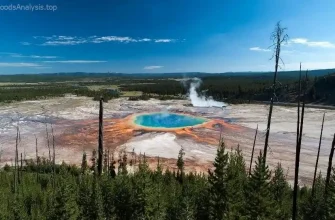Stretching 469 miles from Virginia to North Carolina, the Blue Ridge Parkway is one of the most scenic drives in the United States, offering a perfect blend of natural beauty, rich history, and diverse wildlife. Known as “America’s Favorite Drive,” this stunning parkway connects two of the nation’s most renowned national parks—Shenandoah National Park in Virginia and Great Smoky Mountains National Park in North Carolina. Whether you’re a nature lover, a history enthusiast, or simply in search of a scenic escape, the Blue Ridge Parkway offers something for everyone. Here’s your comprehensive guide to making the most of your visit.
1. What Makes Blue Ridge Parkway – VA/NC Special?
The Blue Ridge Parkway is often called the “Crown Jewel of America’s Scenic Drives,” and for good reason. Its winding roads, sweeping vistas, and abundant wildlife make it a must-see destination for anyone seeking breathtaking views and peaceful outdoor experiences.
- Iconic Views: The Parkway offers some of the most panoramic mountain vistas in the Eastern U.S., with countless overlooks and dramatic views of the Blue Ridge Mountains, especially during sunrise and sunset. Popular overlooks like the Peaks of Otter, Linville Gorge, and Craggy Gardens provide sweeping views of the Appalachian Highlands.
- Diverse Ecosystems: This national parkway traverses diverse ecosystems, from dense hardwood forests and misty mountain peaks to wildflower-filled meadows. You’ll encounter an incredible variety of flora and fauna, including white-tailed deer, black bears, and numerous bird species.
- Appalachian Trail Access: The Blue Ridge Parkway intersects with the famous Appalachian Trail in multiple locations, allowing visitors to embark on day hikes or longer treks through some of the most rugged and beautiful sections of the Appalachian Mountains.
- Waterfalls and Creeks: Several picturesque waterfalls dot the Parkway, including Linville Falls, one of the most photographed falls along the route, as well as Looking Glass Falls and Julian Price Park.
2. Visitor Tips & Practical Information
When planning your visit to the Blue Ridge Parkway, knowing the best times to go, operating hours, and other practical details will help you maximize your experience.
- Best Time to Visit: The Parkway is open year-round, but the most popular time to visit is during the fall (mid-October to early November), when the foliage turns vibrant shades of red, orange, and yellow. Spring (April to June) is also a fantastic time for wildflower enthusiasts, while summer months (June to September) offer mild temperatures ideal for hiking and outdoor activities.
- Opening Hours and Seasons: The Parkway is open year-round, but some areas close during the winter due to snow and ice. Some visitor centers, like the Peaks of Otter Visitor Center, are open from April through October, but other areas may have seasonal closures. Always check the National Park Service’s website for up-to-date road closures or weather-related alerts.
- Accessibility: The Parkway is accessible to all visitors, with paved roads and multiple accessible viewpoints, picnic areas, and restroom facilities. However, certain hiking trails and overlooks may be challenging for individuals with mobility issues. There are also several designated wheelchair-accessible trails and areas.
- Entry Fees: There are no entrance fees to drive the Parkway itself. However, some of the visitor centers and facilities may charge a small fee for educational programs or special events. The Great Smoky Mountains National Park, which the Parkway connects to, does have an entrance fee for those continuing their journey southward.
- Pets: Pets are welcome on the Parkway, but they must be kept on a leash at all times, and they are not allowed on hiking trails except for a few short, paved paths.
3. History and Cultural Significance
The Blue Ridge Parkway is not just a scenic route but also a living testament to the history and culture of the Appalachian region.
- Construction of the Parkway: The Parkway was conceived during the 1930s as a project that would provide both a scenic route through the Appalachian Mountains and employment during the Great Depression. Construction began in 1935 and continued into the 1960s, with labor provided by the Civilian Conservation Corps (CCC) and other federal programs.
- Cultural Heritage: Along the Parkway, you’ll find remnants of Appalachian culture, including historic farmsteads, old mountain cabins, and the Blue Ridge Music Center, where visitors can explore the musical heritage of the region. The Blue Ridge is also home to many traditional Appalachian crafts, including quilting, weaving, and pottery, which can be found at visitor centers and local artisan shops.
- Native American Significance: The Blue Ridge Mountains are part of the ancestral land of several Native American tribes, including the Cherokee. The parkway offers insight into their rich cultural history through exhibits, interpretive signs, and nearby Cherokee heritage sites.
4. What to Expect When You Visit Blue Ridge Parkway – VA/NC
A visit to the Blue Ridge Parkway is an immersive experience, offering visitors a chance to reconnect with nature in an unforgettable way.
- Scenic Drives: One of the most popular activities is simply driving the parkway itself, with its slow, winding roads that beckon you to take your time. You’ll pass through tunnels of trees, open vistas, and dense forests. Each bend offers a new view, making the drive feel like an ever-changing canvas of natural beauty.
- Hiking and Outdoor Activities: Whether you’re a seasoned hiker or someone looking for a gentle stroll, there’s a trail for everyone. Notable trails include the Linville Falls Trail, which leads to a stunning waterfall, and the Craggy Gardens Trail, which is famous for its incredible wildflower blooms.
- Wildlife Watching: The Parkway is home to diverse wildlife. Keep an eye out for deer, black bears (especially in the spring and fall), wild turkeys, and more than 200 species of birds. The best times for wildlife sightings are early morning or dusk.
- Peaceful Ambiance: Expect an atmosphere of tranquility. The Parkway is known for its serenity, especially in the quieter shoulder seasons. The sound of the wind rustling through the trees, the calls of birds, and the occasional rustle of a passing animal are the only sounds you’ll hear in many areas.
5. Nearby Attractions and Dining Options
While the Blue Ridge Parkway itself is a highlight, several nearby attractions make it even more worthwhile to extend your visit.
- Shenandoah National Park: To the north, Shenandoah National Park offers more stunning mountain views, hiking trails, and wildlife watching. Skyline Drive, which runs parallel to the Parkway in Virginia, connects with the Blue Ridge Parkway at Rockfish Gap.
- Great Smoky Mountains National Park: At the southern end of the Parkway lies the Great Smoky Mountains National Park, a UNESCO World Heritage Site renowned for its biodiversity and scenic beauty. The town of Gatlinburg and Pigeon Forge, just outside the park, offer family-friendly attractions.
- Mount Mitchell State Park: Just off the Parkway, Mount Mitchell is the highest peak east of the Mississippi River, offering panoramic views and several hiking trails.
- Dining Options: While the Parkway doesn’t feature many dining establishments directly on the route, nearby towns like Asheville, NC, are home to vibrant culinary scenes. Asheville is known for its farm-to-table dining, breweries, and southern comfort food. Other charming small towns along the Parkway, like Blowing Rock and Boone, also have cozy restaurants and cafes.
6. Family-Friendly and Group Travel Tips
The Blue Ridge Parkway is an excellent destination for family and group travel, with activities and accommodations to suit all ages and interests.
- Kid-Friendly Activities: Families with children can enjoy shorter hikes like the Linville Falls Trail, which is accessible and offers a rewarding waterfall view. The Parkway’s visitor centers often offer educational programs and hands-on exhibits that are fun for young ones.
- Group Travel: For groups, consider renting a cabin or staying in a nearby lodge. The area is also great for large gatherings, with many outdoor activities that can be enjoyed together, such as picnicking, hiking, and taking scenic drives.
7. Instagrammable Moments and Photo Opportunities
The Blue Ridge Parkway is a photographer’s dream, with countless Instagram-worthy moments.
- Craggy Gardens: Famous for its spring rhododendron blooms, Craggy Gardens is one of the best spots for capturing vibrant landscapes.
- Linville Falls: Perhaps the most photographed waterfall on the Parkway, Linville Falls offers dramatic views, particularly during sunrise or sunset.
- Mabry Mill: Located at milepost 176.1, this historic mill is a classic shot, especially with the reflection of the mill in the pond.
- Peak Foliage: If you visit during the fall, the vibrant colors of the changing leaves create a stunning backdrop for photos.
8. Travel Tips and Transportation
Getting to the Blue Ridge Parkway is relatively easy, but some planning is needed for a smooth trip.
- Getting There: The Parkway can be accessed from multiple points along its length, with major entry points near Waynesboro, VA (from Shenandoah NP), and Cherokee, NC (near the Great Smoky Mountains). Asheville, NC, is a central hub for visitors.
- Transportation: The best way to explore the Parkway is by car, but be prepared for narrow, winding roads. Some visitors prefer renting an RV, but be mindful of the Parkway’s steep grades and curvy roads.









